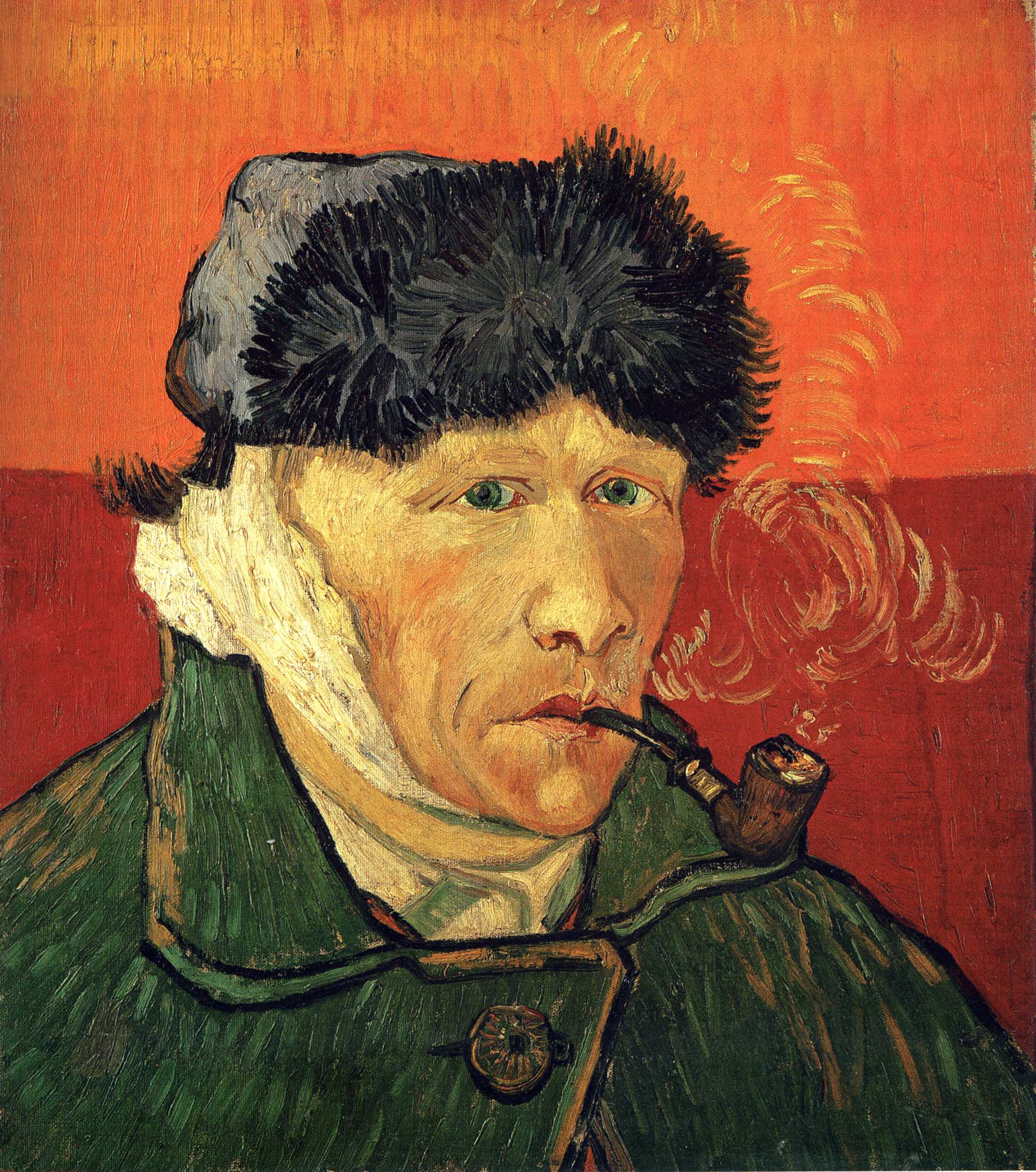10 Most Famous Van Gogh Paintings to see before you Die

Self-portrait Photo by 9gFw_1Vou2CkwQ at Google Cultural Institute Wikimedia Commons
Many regard Vincent van Gogh (1853-1890), perhaps the world’s most famous artist, as the mad artist, the man who painted in a frenzy, or simply the tormented soul who cut off his ear. Those who see his paintings as mere visual manifestations of his troubled mind frequently overshadow his artistic genius. While this is partially correct, his innovative and unique artistic style was enormously influential on a slew of artists who followed in his footsteps. Even when openly influenced by his predecessors or contemporaries, his art remained distinctly his own, developing a distinct style that was rejected by the art-buying public in his own time.
Vincent van Gogh’s career as a painter was brief, but his works revolutionized artistic practice and styles. The intensity of his vision, his wonderful sense of color, and the extraordinary boldness of his technique resulted in masterpieces that profoundly impacted twentieth-century art.
1. The Starry Night

Van Gogh Starry Night Photo by MrGameAndChill Wikimedia Commons
The Starry Night is not only one of Van Gogh’s most famous paintings but also one of the world’s most iconic works of art. Its spectacular swirling night sky, filled with expressionist-style spirals, still elicits strong emotional responses from viewers today.
While this post is about famous Van Gogh paintings rather than a biography of the artist, his life cannot be overlooked when discussing his art. Van Gogh voluntarily checked himself into the Saint-Rémy-de-Provence mental asylum in 1889, just a few months after the infamous episode in which he mutilated his left ear. The view from his asylum window inspired this painting.
Some art critics believe the painting was created in an agitated state, which is reflected in the almost hallucinatory nature of the work and possibly supported by the fact that Van Gogh suffered a second breakdown only a month after completing The Starry Night.
Despite its current status as one of history’s most valuable artworks, Van Gogh appears to have regarded this painting as a failed experiment. It was only mentioned briefly in a letter to his brother Theo as a “night study” several months after it was completed.
2. Café Terrace at Night

Terrace of the café on the Place du Forum in Arles in the evening Photo by Kröller-Müller Museum, Otterlo Wikimedia Commons
Van Gogh focused on creating his now-iconic evening backdrops with starlit skies for the first time in this painting; he would go on to create Starry Night Over the Rhône soon after, followed by The Starry Night. The colors are immediately striking, and the color palette and dark silhouettes in the distance alone indicate that this is a Van Gogh painting. The exact location in Arles where Van Gogh created this image was refurbished in the early 1990s to more closely resemble the site as it was when the artist immortalized it in this painting.
Van Gogh himself was clearly inspired at the time and was excited at the idea of representing nighttime in his paintings. Having just moved to Arles, he was full of ideas and hopeful about the direction of his art. Despite it only being two years before his death, Van Gogh was just beginning to lay the foundation for some of his most iconic paintings, embodied in Café Terrace at Night.
3. Sunflowers
Sunflowers is not just one painting, but two entire series of multiple sunflower paintings. When people talk about Van Gogh’s “Sunflowers,” they usually mean the series he created while in Arles, which included four initial versions and three repetitions of the same idea.
Less well-known is the ‘Paris Sunflowers,’ which he created while living in Paris with his brother between 1886 and 1888. These sunflowers are less triumphant and not in full bloom, but they are still quite spectacular to see and can be found at museums such as The Met in New York, the Kröller-Müller Museum, and the Van Gogh Museum in Amsterdam.
4. Self Portrait
This is widely regarded as Van Gogh’s final self-portrait, as well as his most famous depiction on canvas. While critics disagree on whether this or Self-Portrait Without Beard is his final painting of himself, there is no doubt about which painting is more famous. It has hallucinatory swirling patterns similar to The Starry Night and conveys a general sense of turbulence and pressure. When people think of Van Gogh, they think of this man: an intense, brooding figure full of expression and emotional turmoil.
Van Gogh frequently painted self-portraits. There are several possible explanations, but one that is rarely mentioned is that he simply did not have the funds to pay models to sit for hours at a time. While Van Gogh did not live in abject poverty, a common misconception, managing money was difficult.
His correspondence with his brother reveals a reliance on Theo’s monthly allowance, which never seemed to be sufficient to match Vincent’s ambitions. Art supplies were, and still are, expensive, and hiring a model may have been a step too far for someone who was primarily inspired by nature.
5. The Potato Eaters

The Potato Eaters Photo by rQE6qmf9oVuKPA at Google Cultural Institute Wikimedia Commons
Although it lacks the colorful star power of some of his later works, The Potato Eaters remains one of Van Gogh’s most famous paintings. This painting, created in 1885, slightly before the other paintings shown thus far, reveals the artist’s Dutch ancestry.
Van Gogh was heavily influenced by Hague School artists, most notably Jozef Israls, and sought to depict the realities of peasant life as they were: coarse, sometimes ugly, but also with the authenticity and fondness found in the familial setting.
He adored this work. He wrote a letter to his sister two years after finishing it, claiming that the painting of peasants eating potatoes in Nuenen was the best thing he ever did. The subject matter and execution of the painting were most likely very close to Van Gogh’s heart, and he was ecstatic to have completed what he considered to be one of his masterpieces.
Aside from its special place in the artist’s heart, the painting is notable for slightly darker reasons: it was stolen twice, first from the Kröller-Müller Museum in 1988, and then from the Van Gogh Museum in 1991. The paintings were returned safely and undamaged in both cases, particularly the latter.
6. Wheatfield with crows
Van Gogh painted several depictions of the wheatfields that surrounded him in his final days. This one is the most well-known, but also the darkest. It appears to depict a sense of isolation and loneliness, with a path that ends in the middle of the field and goes nowhere, surrounded by crows. It’s a depressing image.
There are numerous other interpretations of the painting, including one that claims there is no hint of angst or despair and there is no way of knowing the artist’s motivations. What is certain is that the vivid color palette, reminiscent of The Starry Night and Sunflowers, makes this one of Van Gogh’s most visceral and striking paintings.
7. Almond Blossoms
Van Gogh’s Almond Blossoms are lovely. The subject matter is aesthetically pleasing, and the artist’s joy in painting them is evident in the finished product. This is the most well-known of a series of paintings depicting blossoming almond trees.
Van Gogh was obsessed with Japanese art and was heavily influenced by ukiyo-e woodcuts and prints, according to a little-known fact about him. The work’s inspiration can clearly be traced back to Japanese art, with the 1887 work Japonaiserie Flowering Plum Tree (after Hiroshige) being both an homage to the Japanese artist Hiroshige and a foreshadowing of Van Gogh’s own masterpiece.
During his time in Southern France, Van Gogh had his most productive period, referring to Arles as “the Japan of the South” due to its abundance of sunlight and flowering trees. He arrived in March 1888, just as the fruit trees were starting to bloom, and began painting at an almost unprecedented rate. Van Gogh’s most famous painting of almond blossoms was created for another reason: the birth of his nephew, Theo, the son of his brother Theo. It’s one of the few Van Gogh paintings that depicts hope, joy, and serenity, making it all the more special.
8. Irises

Irises Photo by The Getty Center, Object 826 Wikimedia Commons
Van Gogh’s Irises are perhaps the artist’s best example of creating work with extreme aesthetic appeal. The painting is full of light, life, and natural beauty, with a touch of Japanese inspiration from Almond Blossoms. Simply put, it’s stunning to look at and brimming with color.
Van Gogh began working on this painting almost immediately after checking himself into an asylum due to his deteriorating mental health. He referred to the painting as “the lightning conductor for my illness,” and threw himself into his work by depicting the flower garden at the Saint Paul-de-Mausole asylum.
It’s clear that spending all day in the garden gave Vincent some sense of serenity or peace, however fleeting. While the artist considered it a study, his brother Theo recognized something special in it and submitted it to the Société des Artistes Indépendants, where it was exhibited alongside Starry Night Over the Rhône.
9. Self-Portrait with Bandaged Ear

Self-portrait with bandaged ear and pipe Photo by Wikipaintings.org Wikimedia Commons
When discussing Van Gogh with someone, it’s inevitable that the conversation will eventually go toward what exactly happened to his ear – pictured in this very painting. Van Gogh’s work is inextricably linked to his personal life and the events that unfolded over the course of his artistic career. The image of Van Gogh with his bandaged ear is an iconic one, and sometimes (unfortunately) the first image that comes to mind when someone thinks of Vincent van Gogh.
While living in Paris with his friend and fellow artist Paul Gauguin, Van Gogh proved to be a less-than-ideal roommate. He and Gauguin had frequent disagreements that sometimes turned violent. During one such argument, Van Gogh is said to have had a seizure and threatened Gauguin with a razor before injuring himself, cutting off a portion of his left ear and severing an artery in his own neck. In a heightened mental state, Vincent went to a local brothel and gave one of the sex workers the lobe of his ear. He was taken to the hospital the next day, with no recollection of what had happened.
10. Bedroom in Arles
Bedroom in Arles’ is the title given to three nearly identical works, all of which are on display in various museums around the world. Each painting depicts an intimate scene from Van Gogh’s bedroom, providing a unique insight into how the artist lived. This is where he went after a long day of work and where he dreamed at night. The paintings are all relatively simple and straightforward, with a strong emphasis on effective color use.
This was Vincent Van Gogh’s bedroom in ‘The Yellow House,’ which he shared with Paul Gauguin. Gauguin slept in the spare bedroom, which had a closed door on the left. In a letter to a friend, Vincent explained that the original painting in this series was inspired by a long bout of illness that left him bedridden for several days.
The miniature portraits hanging next to the bed are a small but nice detail that keen observers may notice. This is the 19th-century equivalent of hanging polaroids of your friends on your wall; the people depicted are Van Gogh’s contemporaries and close friends. Paul-Eugène Milliet and Eugène Boch

 English
English






